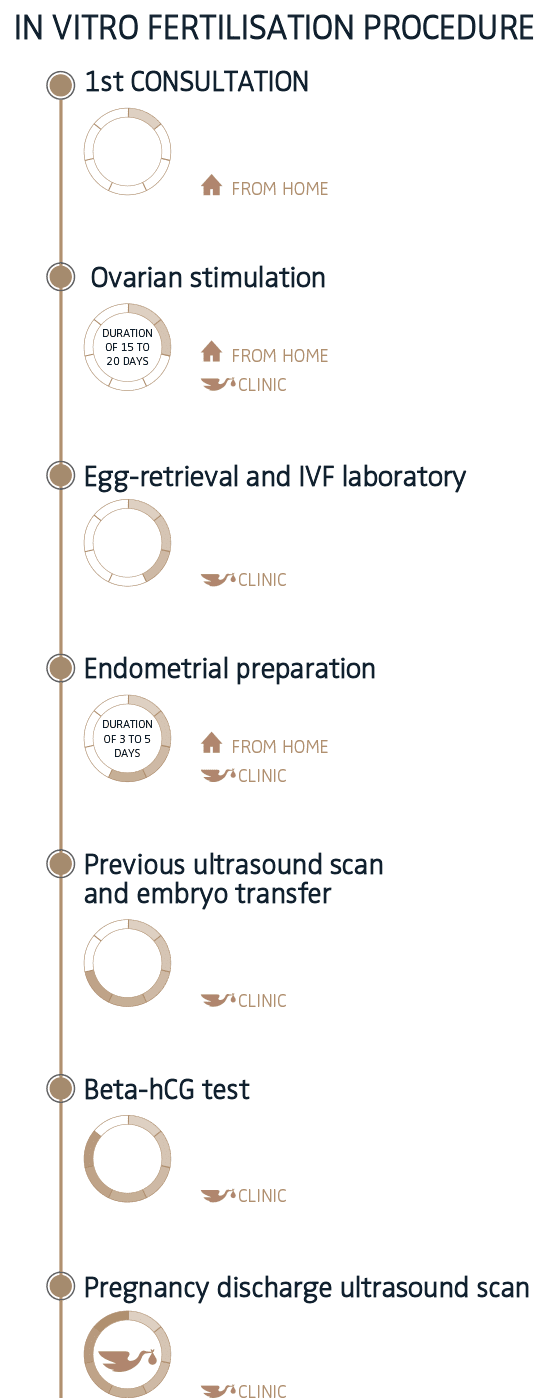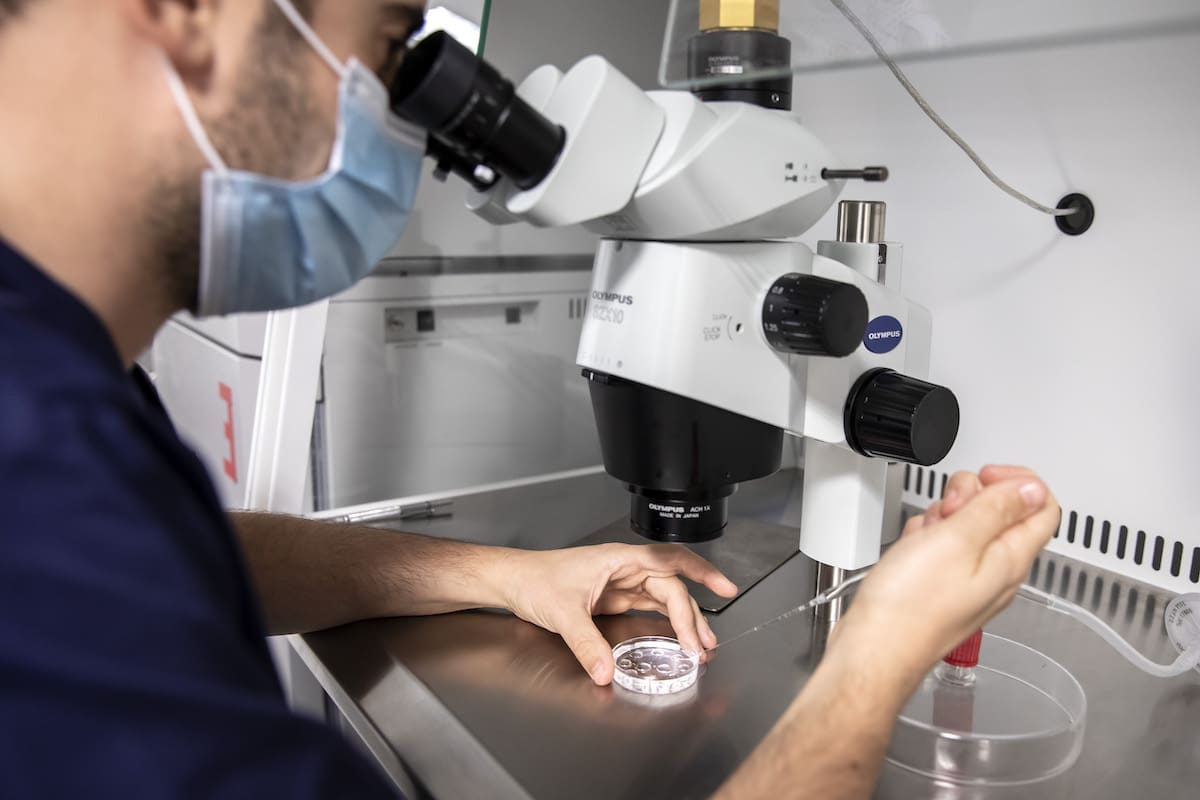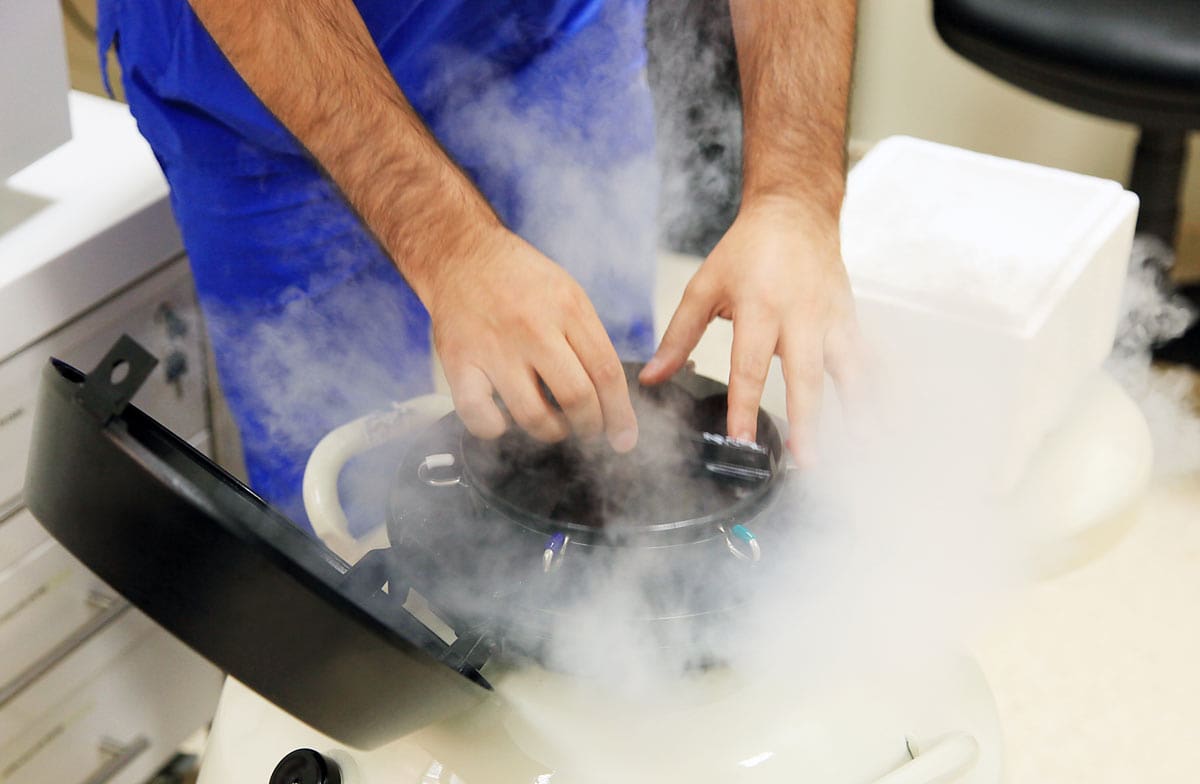The importance of a good IVF laboratory
The importance of a good IVF laboratory
The IVF is carried out in a specialized Assisted-Reproduction laboratory using a sperm sample and the egg cells previously extracted from the woman’s body. In the clinic’s IVF laboratory, the specialist combines the female and male gametes so that fertilization occurs, producing an embryo. Once the embryo has formed, it is transferred to the uterus of the mother through a procedure known as embryo transfer.
WHEN IS AN IVF TREATMENT RECOMMENDED?
WHEN IS AN IVF TREATMENT RECOMMENDED?
In vitro fertilization is a treatment appropriate in the following cases:
- Absence, injury, or blockage of the Fallopian tubes.
- Scarcity, lack of motility or alteration of sperm cells.
- Women with endometriosis.
- Women pursuing motherhood at more advanced ages.
- Women with recurrent miscarriages.
IN VITRO FERTILIZATION: STEPS AND PROCEDURE
IN VITRO FERTILIZATION: STEPS AND PROCEDURE
Before embarking on an in vitro fertilization treatment, the diagnosis is fundamental, together with a highly customized strategy for the cycle adapted to each individual case.
Once all complementary diagnostic test results have been studied, and a specific strategy has been adopted, ovarian stimulation begins. This is a medically supervised process for the purpose of causing the ovaries to produce the maximum quantity of optimum quality egg cells.
During this process, specialized physicians conduct different checks and analyses to monitor the growth of the follicles, the cellular structures that contain the ova.
When the egg cells are mature, the ovarian puncture is scheduled, which is carried out in the operating rooms of our IVF clinic. This is a simple surgical procedure that is usually performed under sedation, in which the specialist extracts mature egg cells from the woman’s ovaries.
Next, these egg cells are transferred to the laboratory to be fertilized by traditional IVF or by IVF-ICSI.
The mastery of the technique on the part of the specialists, the conditions of stability of the IVF laboratory, the available technology or the quality of the cultivation media utilized are decisive for the success of the in vitro fertilization.
Once fertilization has occurred, the embryos are transferred to the woman’s uterus on Day 3 or in the blastocyst phase (about Day 5), as determined in the strategy of each patient. The remaining embryos will be vitrified for future use.
When 9-10 days have passed after the embryo transfer, we will carry out the pregnancy test.
PROCEDURE


Initial appointment
The most complete initial fertility consultation. All our professionals dedicate the resources and attention needed for each case, without established time frames. We focus all our efforts on determining a diagnosis and a treatment strategy completely customized to the individual situation of each patient. Also available online.
Ovarian stimulation
Ovarian stimulation is the period in which hormonal medication is administered to the woman to stimulate the ovaries and obtain quality ova viable for fertilization in the IVF laboratory. During this phase, 3 or 4 ultrasound controls are usually needed, which can be conducted in person or comfortably from the patient’s home.
Puncture
Surgical procedure that requires sedation, in which the specialist aspires the mature follicles (cellular structures that contain the egg cells) of a woman’s ovaries, so that the egg cells can be fertilized in an IVF laboratory.
Laboratory and embryo cultivation
Once the egg cells have been harvested and the sperm sample prepared, our embryologists fertilize the gametes to product embryos. In general, the IVF/ICSI technique is used to achieve fertilization. Once fertilization has occurred, the embryologists observe and care for the embryos every day while their cell division takes place, as they become zygotes (Day 1), then morulas (around Day 4) and finally blastocysts (about Day 5).
Preparation of the endometrium
Fundamental phase for achieving pregnancy. It consists of preparing the endometrium for the thickness, appearance, vascularization etc. that are best suited to achieve embryo implantation. Preparation of the endometrium is completely customized to the individual: it can be carried out in natural cycle or in hormone-replacement cycle.
Previous ultrasound and embryo transfer
This consists of an in-depth ultrasound scan before the transfer to verify the correct condition of the uterus: access, vascularization, thickness, trilaminar structure, etc. If everything is in proper order, the next step is the embryo transfer, in which the embryo generated in the IVF laboratory is deposited in the woman’s uterus so that it can implant, resulting in pregnancy. The excess embryos will be cryo-preserved for future use.
Analysis for beta-hCG
After 10 or 11 days have passed since the embryo transfer, a blood test is carried out to detect small quantities of the hormone beta-hCG (human chorionic gonadotropin).
Appointment with ultrasound for granting clearance for pregnancy
After 8 or 9 weeks, we arrange an appointment with the patients. At this appointment, an ultrasound is carried out to view the gestational sac. We hand over to the couple all guidelines and reports, and the patient is discharged.
BLOG
Request your first visit
Request your first visit
Request personalized information about your case. Fill out this form and we will contact you.











